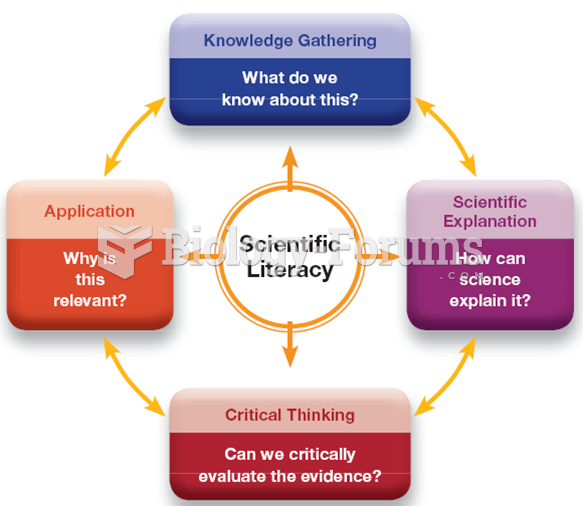|
|
|
Hypertension is a silent killer because it is deadly and has no significant early symptoms. The danger from hypertension is the extra load on the heart, which can lead to hypertensive heart disease and kidney damage. This occurs without any major symptoms until the high blood pressure becomes extreme. Regular blood pressure checks are an important method of catching hypertension before it can kill you.
Fungal nail infections account for up to 30% of all skin infections. They affect 5% of the general population—mostly people over the age of 70.
The B-complex vitamins and vitamin C are not stored in the body and must be replaced each day.
In the United States, there is a birth every 8 seconds, according to the U.S. Census Bureau's Population Clock.
In most cases, kidneys can recover from almost complete loss of function, such as in acute kidney (renal) failure.






